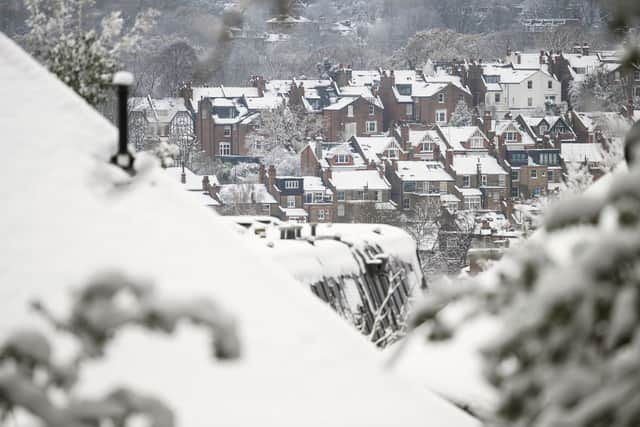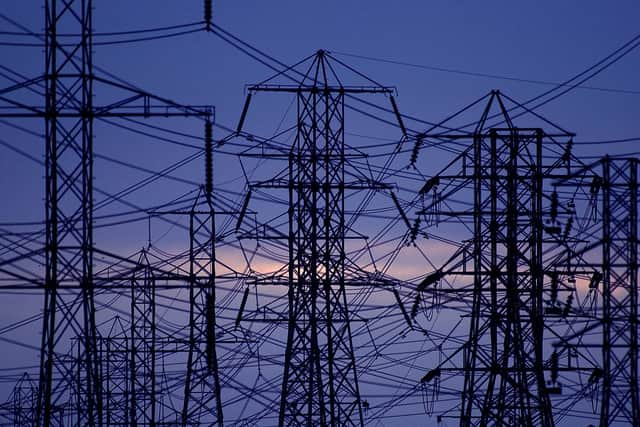National Grid: will there be blackouts in UK today? ESO ‘contingency’ plans explained as winter sparks concern
and live on Freeview channel 276
The UK’s electricity grid operator launched emergency ‘contingency’ plans earlier today as freezing temperatures heaped pressure on the network, prompting energy demand to soar across the country.
National Grid‘s Electricity System Operator (ESO) asked two backup coal power plants to start warming up on Monday (12 December) in order to give the public “confidence in energy supplies”. It added that the move means the coal-fired stations can be used as “tools for additional contingency” as needed so that the network can run as usual, stressing that people “should continue to use energy as normal”.
Advertisement
Hide AdAdvertisement
Hide AdIt is understood the units will no longer be needed as the UK’s energy needs can be met by other sources - including an anticipated pickup in wind power. National Grid ESO confirmed to NationalWorld: “This requirement has since been withdrawn and the units have been stood down.”
This was not the only ‘contingency’ plan activated as the operator is also looking to run another test of its Demand Flexibility Service - which pays customers to use less electricity during certain hours of the day. Customers of some energy suppliers may be asked to reduce their consumption between 5pm and 7pm for instance, as this is when demand is usually particularly high as people return home from work and school, and look to start making dinner.
The measures come as the UK’s current cold snap - which has seen the country faced with below-zero temperatures and snow in many regions - has ramped up demand for energy when supplies are already tight. Concerns have been raised then about the UK’s power supply, especially given the grid’s previous warning that nationwide scheduled blackouts are a possibility.


But the backup measures were purely precautionary, National Grid has stressed. The demand flexibility service is simply being tested and not activated in reality, and the coal-fired stations - although initially asked to warm - sent an alert as part of standard procedure, but this has since been withdrawn.
Advertisement
Hide AdAdvertisement
Hide AdNational Grid told NationalWorld: “We’ve issued a notification to warm the winter contingency coal units. This measure should give the public confidence in Monday’s energy supply.
“This notification is not confirmation that these units will be used on Monday, but that they will be available to the ESO, if required. The ESO as a prudent system operator has these tools for additional contingency to operate the network as normal and the public should continue to use energy as normal. This requirement has since been withdrawn and the units have been stood down.”
Meanwhile, Downing Street has said that the UK’s commitment to end the use of coal for power generation by October 2024 remains in place. Prime Minister Rishi Sunak’s official spokesperson commented that “coal is a transition fuel towards net zero” and the government is “confident in the diversity of our energy supply and we have a clear path to net zero”.
The coal power stations are operated by Drax in North Yorkshire, and are two of five that were put on standby under so-called winter contingency contracts, which National Grid negotiated following a request from the government’s Department for Business, Energy and Industry Strategy. The two units are each said to be capable of generating around 570 megawatts – adding more than 1.1 gigawatts to the grid if used.


Has National Grid launched ‘contingency’ plans before?
Advertisement
Hide AdAdvertisement
Hide AdConcerns were previously raised over the UK’s electricity supply when National Grid ESO sent out and then rapidly cancelled a notice that said the difference between the supply and amount of electricity actually available would be smaller than hoped for on 28 November and 29 November. The Capacity Market Notice was issued at 1.33pm, warning of a tight grid at 6pm, before it was cancelled at 2.04pm.
Alerts are broadcast automatically when expected margins between demand and supply drop to a certain level, but do not mean blackouts are likely by themselves.
On the same day, the ESO also issued a statement that said it was considering paying households across the country to reduce their energy use to help out - in other words, activating the first ever live run of its Demand Flexibility Service. But once again National Grid circled back on this statement - saying this afternoon that it will no longer implement its blackout prevention scheme. So these exact measures have been contemplated - and backtracked on - by National Grid before.


What is National Grid ESO’s Demand Flexibility Service?
The Demand Flexibility Service is a money-back scheme that will be implemented by energy suppliers and monitored using a smart meter to help prevent winter blackouts. The voluntary scheme is scheduled to run from November to March and asks people and businesses who have signed up to reduce or move their electricity usage outside peak hours.
Advertisement
Hide AdAdvertisement
Hide AdIt was launched in November and has already been tested a few times, but not yet run live. It could mean over winter that homes across the UK will be paid to help take the strain off the country’s energy grid when demand cannot be met amidst cold temperatures.
How likely are blackouts in the UK this winter?
Households were warned earlier this year that there could be potential blackouts this winter, after fears power plants will not be able to run to full capacity.
National Grid ESO said that power plants in certain parts of the country may not be able to source enough gas to operate at full power throughout the winter months, leading to three-hour planned blackouts in some areas of the country. However, the operator also inisted that this situation is “unlikely” in the current circumstances.
If there are blackouts, the government has formulated an emergency plan known as Programme Yarrow, which will ensure the UK’s energy demands are met and the vulnerable are cared for.
Comment Guidelines
National World encourages reader discussion on our stories. User feedback, insights and back-and-forth exchanges add a rich layer of context to reporting. Please review our Community Guidelines before commenting.
